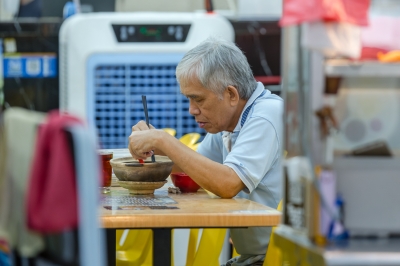KUALA LUMPUR, July 15 — The growth of senior living centres in Malaysia — where Asian filial piety remains a virtue — reflects the changing realities of the country and its economy, said anthropologist Elizabeth Gimbad.
While disagreeing that the phenomenon indicated waning filial piety, she said it does show how younger generations were increasingly likely to have migrated and not be around to reliably care for their parents and grandparents who were also likely to be more self-reliant than previous generations.
She said the concept has been around for nearly a decade, and was now manifesting in retirement villages and communities across the country.

The growth of senior living centres in Malaysia — where Asian filial piety remains a virtue — reflects changing realities. — Picture by Sayuti Zainudin
Advertisement
“The thing they had in common was their children were overseas or extremely busy, at the same time the retirees themselves were extremely independent and wanted their own freedom,” Gimbad told Malay Mail when contacted.
Some senior living centres also traced back to the Covid-19 pandemic as the movement control order (MCO) and its variations effectively prevented children from visiting their parents and elders, Gimbad said.
“The seeds were already there but MCO accelerated the growth because you suddenly had so many people unable to return to care for their parents and older relatives.”
Advertisement
Gimbad added that the phenomenon also tracked other developments in the elder planning, such as the increased popularity of will-writing and health insurance.
While there is no official data on the growth trend of senior living centres to date, Gimbad agreed that the increased acceptance was due in part to the notions of independence and vitality being promoted.
“Also, I think the shortage and cost of maids is another driver for senior centres. There’’s also distrust of live in and daily carers — theft etc.,” she added.
Gimbad also noted that spiralling property prices meant millennials and younger generations were typically restricted to smaller homes such as apartments and condominiums, where space was limited for multi-generational living.
“The millennials are usually either living overseas or they have smaller living spaces so it’s a bit of a squeeze to accommodate their parents,” she said, adding that the older generation also understood this.
Not all rosy
Still, she said the phenomenon was not without resistance, as the more traditional were likely to struggle with the concept.
She said the pre-World War II generation were not apt to welcome the idea of senior living as they were only familiar with the old folks’ home of before.
This group was most likely to view senior living centres as a stigma, she said.
Pacific Senior Living Sdn Bhd chief executive officer and director of health services Dr Ramnan Jeyasingam agreed that the stigmatised view persisted, but said it was less of an issue with living centres for healthy senior living.

Pacific Senior Living Sdn Bhd chief executive officer and director of health services Dr Ramnan Jeyasingam and Marketing Communication Manager S. Malini shared some of the amenities available in the rooms here. — Picture by Sayuti Zainudin
Dr Ramnan said that while senior living services remained a premium category at the moment, this would shift as the country keeps growing more aged.
“The Chinese always say that you are ungrateful if you send your parents to an old folks home, but that mindset is slow changing,” GreenAcres by Total Investment Sdn Bhd executive director John Chong.

